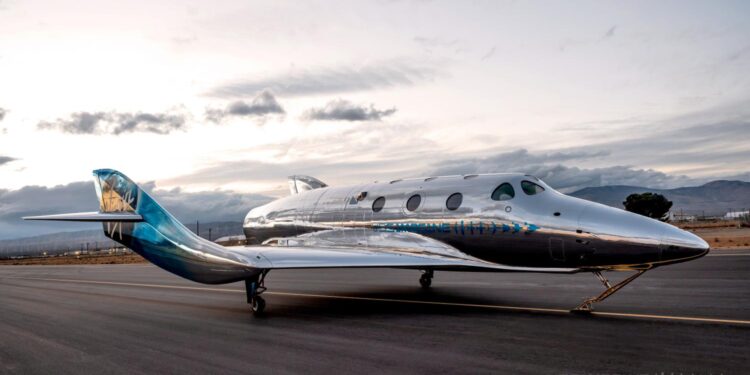Buckle up for blast-off in a decade
Keep your seat tilted back during launch, do not unfasten your seatbelt while in space, and try to clench your buttocks as you leave and re-enter the Earth’s atmosphere.
The safety briefings before long-haul flights could be very different in future, judging from UK Civil Aviation Authority (CAA) research, that suggests holidaymakers will be able to fly from London to Sydney in less than two hours within a decade by travelling via space.
The CAA is funding medical studies into the effects of suborbital space flights, in which tourists would be blasted into space briefly before descending to their destination in a fraction of the time taken by conventional flying.
Suborbital flights, such as those offered by Sir Richard Branson’s Virgin Galactic and Jeff Bezos’s Blue Origin companies, cost more than £350,000 per seat at present. However, regulators believe they will cease to be the preserve of super-rich thrill-seekers and become an intercontinental travel option “accessible to anybody”.

A CAA-funded study found most people coped well with the G-forces of suborbital space flights. Published in the journal Aerospace Medicine and Human Performance, it said: “Commercial suborbital space flights are now available for tourism and scientific research, and are ultimately anticipated to mature into extremely fast point-to-point travel, eg London to Sydney in less than two hours.” Existing flights to Sydney take about 22 hours.
The research, facilitated by the RAF and conducted with King’s College London, found that those taking such flights would not need to be super-fit or young, with older people potentially even better able to cope with the rigours of space travel.
A study placed 24 healthy people aged from 32 to 80 in an RAF centrifuge at Cranwell to recreate the G-forces felt during the launch and descent of suborbital rocket and spaceplane flights.
It found that G-forces could reach four times the usual force of the Earth’s gravity for 20 to 30 seconds during ascent and peak at six times, or 6G, during descent for 10 to 15 seconds. These forces can create a heavy sensation on the chest, making it more difficult to breathe, and can reduce the intake of oxygen, affect the rhythm of the heart and lead blood to pool away from the brain. The study noted a rise in heart rate and blood pressure, a dip in blood oxygen and some “greying out” of peripheral vision during periods of high G-force, but found these quickly return to normal. One participant briefly lost consciousness, but with no lasting ill effects. The effects were reduced when the chair was tilted back slightly.
Dr Ryan Anderton, the CAA’s medical lead for space flight, said of suborbital flights: “Physiological responses are likely to be benign for most passengers.” He said that older people tend to have slightly “stiffer arteries”, which could reduce the pooling of blood away from the brain. Astronauts need to be extremely fit and undergo years of intensive training. This will not be necessary for spacebound holidaymakers, but certain medical problems could make it dangerous to experience high G-forces.
“For the vast majority of people, even older people, that’s not necessarily going to present a problem and there isn’t a detrimental effect long-term,” Anderton said. “What we’re trying to do in research is determine which individuals might be more susceptible and what we might have to screen them for.”
A separate study, to be presented this week, looked at steps passengers could take to minimise these effects.
“Simple measures such as tensing or squeezing your lower legs or buttocks while the onset of [high G forces] came on were sufficient to reduce [the impact],” Anderton said, explaining that this helps to maintain a strong blood flow to the brain. “We’re trying to make this accessible to anybody.”
The failed first attempt, in January, to launch satellites from UK soil has not halted plans to turn Britain into a spacefaring nation. Spaceport Cornwall has signed a memorandum of understanding with a US firm, Sierra Space, for spaceplanes to land in Newquay and has held talks with Virgin Galactic. Six more UK spaceports are planned.
“Human space flight from these locations is absolutely possible,” Anderton said. “With companies showing interest in potentially launching from the UK . . . we need to be prepared [and] able to understand how our passengers, UK citizens, might be affected when they go on a suborbital space flight.”
Source: The Times



Recent Comments